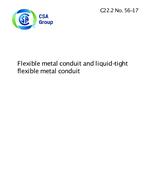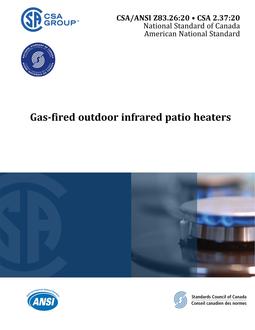1 Scope
1.1 This Standard covers mechanical couplings used to axially join pipes and fittings in non-pressure drain, waste, and vent (DWV) and sewer piping systems that are located inside or outside buildings and above or under the ground.
Notes: (1) Caution should be used when installing mechanical couplings at low temperatures. The coupling manufacturer should be consulted. (2) Caution should also be used when installing mechanical couplings at the base of stacks, at cleanouts, or at offsets in a piping system (see Annex A).
1.2 This Standard includes requirements for mechanical couplings of the following types: (a) Type 1: couplings that are used to join pipes of the same or different materials or sizes and incorporate a centre stop and an external shield. (b) Type 2: couplings that are used to join pipes of the same or different materials or sizes, but for which a centre stop and/or shear ring are allowed but not required. (c) Type 3: couplings used to join hubless cast iron pipe and fittings. Such couplings are composed of a stainless steel shield, a clamp assembly, and an elastomeric sealing component that complies with the requirements of ASTM C 564.
Note: Pipe and pipefitting materials that may be joined include (a) asbestos cement (CSA B127.1); (b) cast iron (CAN/CSA-B70); (c) concrete (CSA A257 Series and ASTM C 14); (d) copper (ASTM B 306); (e) ABS (CAN/CSA-B181.1, CAN/CSA-B182.1, ASTM D 2661, and ASTM F 628); (f) PVC (CAN/CSA-B181.2, CAN/CSA-B182.1, CAN/CSA-B182.2, ASTM D 2665, and ASTM F 891); (g) galvanized steel (ASTM A 53/A 53M); and (h) vitrified clay (ASTM C 700).
1.3 The joining of pipes and fittings with bell and spigot ends that use an elastomeric gasket seal is not covered by this Standard.
1.4 Users should note the existence of other Standards developed for different types of couplings or coupling materials, e.g., ASTM C 1173, ASTM C 1277, ASTM C 1440, ASTM C 1460, ASTM C 1461, ASTM C 1540, and ASTM D 5926.
1.5 In this Standard, “shall” is used to express a requirement, i.e., a provision that the user is obliged to satisfy in order to comply with the standard; “should” is used to express a recommendation or that which is advised but not required; “may” is used to express an option or that which is permissible within the limits of the standard; and “can” is used to express possibility or capability.
Notes accompanying clauses do not include requirements or alternative requirements; the purpose of a note accompanying a clause is to separate from the text explanatory or informative material.
Notes to tables and figures are considered part of the table or figure and may be written as requirements. Annexes are designated normative (mandatory) or informative (non-mandatory) to define their application.
1.6 The values given in SI (metric) units are the standard. The values given in parentheses are for information only.
Product Details
- Published:
- 04/29/2005
- Number of Pages:
- 32
- File Size:
- 1 file , 510 KB


